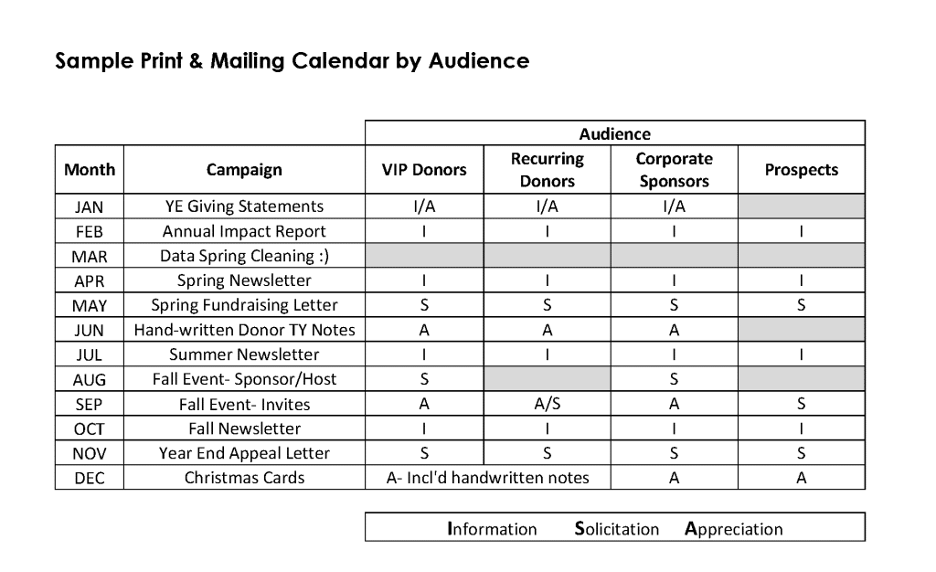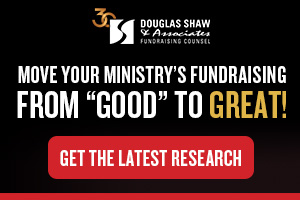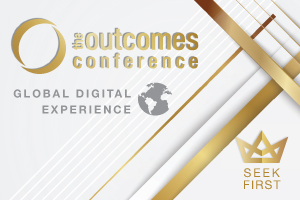
Communication Starts with Balance By Jonathan Helder

Successful Communications Always Begins with the Right Balance
We’ve all heard these horror stories or experienced them ourselves. Nonprofits sending relentless email solicitations. Memorial gifts given online transition to an onslaught of mailers. The only mail you receive from your favorite nonprofit is solicitations. None of us want to be that nonprofit. While there is undoubtedly a case for nonprofits to make explicit appeals, with major nonprofits leveraging AI and algorithms to reach new donors, slapping together communications or just winging it won’t cut it anymore. To compete, your communications must be targeted, compelling, and frequent. While it may seem overwhelming, effective communications all come down to balance.
Balance by Audience
My Marketing 101 professor once told me, “It’s all about the who.” Or, put another way, it’s all about the audience. Regrettably, nonprofits struggling with communications almost always lean on one audience segment: All contacts. However, do you want to solicit your major year-end giver for a $50 Giving Tuesday gift? Likely not.
Indeed, balancing multiple audiences can feel daunting, but it doesn’t have to be. Perhaps you can break your contacts into 2 or 3 audiences (i.e., general audience, online/credit card givers, and major donors). Create a tag or group in your CRM so these segments are easily identified when you run mailing lists. Likewise, integrate your donor database with your email marketing software (i.e., Mailchimp) to keep these segments across your communications platforms. Lastly, when creating your communications calendar, look at the communication diet from each audience’s perspective. Is each segment getting a balanced dose of A/I/S from various methods (more on those below)?
Balance by Type: Appreciation, Inspiration/Information, Solicitation
We all know that over-soliciting is a great way to burn out a donor. But we all need to make the ask at some point. So, how much is too much? How do you strike a balance? Simple, by having a solid balance of AIS: Appreciation, Inspiration/Information, and Solicitation. Some people have even called this the giving cycle (inspire, ask, appreciate, repeat).
Solicitations should be clear, infrequent, and follow many other interactions. One of my first fundraising mentors instructed me to “never make half asks.” So, what might that look like? Do you put a small envelope in every mailing? A donate button at the bottom of every email? Are all of your in-person events fundraisers? If so, your audience may feel less like a ministry partner and more like an ATM.
Case in point, instead of half-asking with every email, try to make your recurring emails more informational/inspirational, filled with donor-centric appreciative language. Then, once a quarter, send an email with a direct appeal tying back to the messages you have been sharing over the last quarter. Not only will your open rates increase for all emails (after all, they aren’t all solicitations anymore), but your appeals should have a much higher response rate.
Balance by Method
Donors are busy, and so are you. Case in point: do you have any unopened emails from your favorite nonprofit? This doesn’t make you or your donor a bad person. However, it does mean quarterly emails, once-a-month social posts, and two annual solicitation mailers will not be enough. Nonprofits have never had more ways to communicate with their donors, yet many nonprofits lean their communications towards what they like to see and what is easiest for them to produce.
Important note: You are not the audience, and your communications shouldn’t be planned around your or your board members, communications preferences. As such, it doesn’t matter if you “don’t like mail” or your board member “doesn’t like weekly emails.” Please try to take yourself out of the picture entirely and do what you can to use multiple avenues to share your ministry’s stories and impact.
If you don’t know where to start, check out the sample calendar below. While digital communication certainly has cost and convenience advantages, mail must play a significant role in any nonprofit’s communications. Need proof? Run a list of your top 20 donors and see how much engagement they have with your emails. While most will have some engagement level, there is a good chance a healthy number of them don’t open any of your emails. The same could be said of social media efforts. So, if you only mail solicitations, your “mail-only donors” will think your organization does one thing: ask for money.
Although there is a seemingly unending list of communications platforms, I believe most nonprofits can effectively communicate with their audiences through email, direct mail, Facebook, and Instagram. And there are certainly cases for using LinkedIn,
Strike the Right Balance
We’ve provided this example calendar below to assist you with improving your communications (by balancing your Audiences, AIS, and Methods). Effective communications don’t have to be complicated. Finding the right balance improves engagement and, most importantly, how much you raise.

####
Jonathan Helder, CFRE, ECRF, Consultant, serves at The Timothy Group. He has over a decade of proven fundraising experience and a love for data. Jon enjoys helping ministries implement data-based strategies and tools to improve fundraising and organizational effectiveness. Jonathan has written articles as well as presented to local and national organizations, including the Association of Fundraising Professionals (West Michigan), Do More Good, Nonprofit Hub, and the Lakeshore Nonprofit Alliance.

REGISTER TODAY!

What is Christian Leadership Alliance?
Christian Leadership Alliance equips and unites leaders to transform the world for Christ. We are the leaders of Christ-centered organizations who are dedicated to faithful stewardship for greater kingdom impact.



